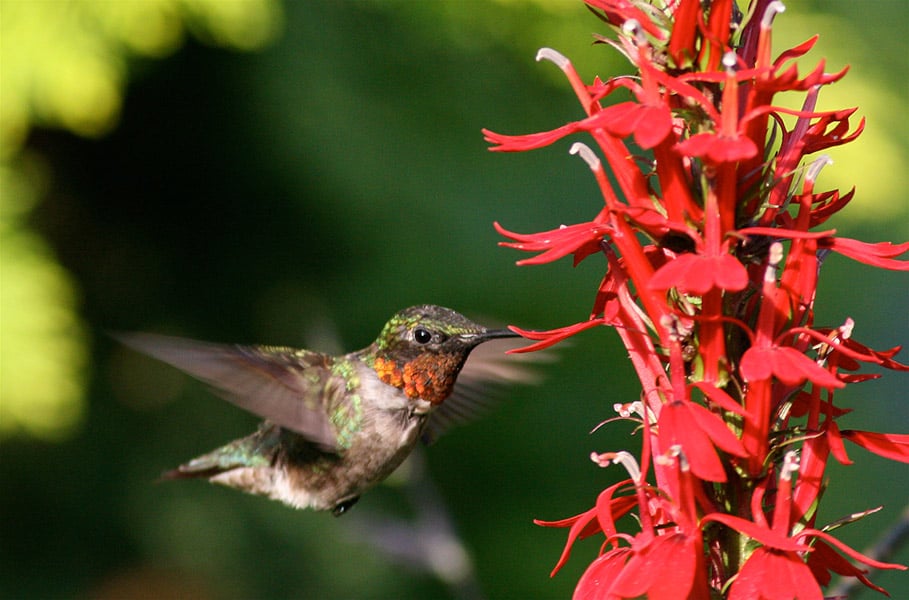Summer Birds of Michigan (June, July, August)
With the arrival of June, singing activity of breeding songbirds reaches its peak, while a fair number of migrant shorebirds still occupy wetlands and mudflats. Very few waterfowl are migrating, and all those that remain to breed in Michigan have, for the most part, built nests and are incubating eggs. Late migrant songbirds, including black-billed and yellow-billed cuckoos, olive-sided and yellow-bellied flycatchers, and Connecticut warbler may still be present in the southern Lower Peninsula, not yet occupying their breeding grounds.
This is a good season to head north for breeding songbirds, or to head to one of the marshes and wetlands for shorebird migration. Summer activity at your bird feeder will likely be reduced, as the winter birds have gone north, and the resident breeders are busy raising young. Visits will likely be limited to the “regulars,” including mourning dove, downy and red-bellied woodpeckers, black-capped chickadee, tufted titmouse, white-breasted nuthatch, house finch, and American goldfinch. In cities, feeders will also have plenty of rock pigeons, European starlings, and house sparrows year-round.
By July many passerines are feeding fledged young from their first broods, and by the end of the month singing activity tends to diminish as the parent birds are both busily occupied feeding young. There is an almost imperceptible gap between the northbound shorebirds and the southbound ones, and the first adults of many Arctic breeding species return to Michigan in late July. In northern areas, adult male ruby-throated hummingbirds begin to depart by the end of July. Replacing them at your hummingbird feeders will be adult females and newly fledged youngsters, creating quite a feisty scene as they jostle for feeding spots. Waiting for the peak bloom of thistles, American goldfinches generally begin their nesting activity in July.
Even though the calendar still indicates it is summer, the transition from summer to fall as far as bird activity is concerned occurs in August. Southbound shorebirds arrive in good numbers during this month, as well as a few early Bonaparte’s gulls and some early stragglers of northern breeding waterfowl. The peak of red-necked grebe migration, involving thousands of birds, occurs at Whitefish Point in late August. Although it is relatively inconspicuous, songbird migration is often well underway by mid-month, with peak numbers of many warblers, including yellow and Blackburnian, as well as Empidonax flycatchers, and warbling vireo.
The first migrant thrushes begin moving by mid-August and build in numbers through the end of the month. The migration of common nighthawks typically peaks at the end of the month. Quite a number of breeding species slip out of the state almost undetected, including black-billed and yellow-billed cuckoos, olive-sided and Acadian flycatchers, blue-winged, golden-winged, and cerulean warblers, and yellow-breasted chat. Nearly all of Michigan’s Kirtland’s warblers depart by the end of August, except for a few stragglers.
Swallow numbers build up through the month, as most species prepare for migrations into September. Purple martins and bank swallows are the earliest to leave, with most gone by the end of August. Ruby-throated hummingbird migration peaks toward the end of the month, and most eastern kingbirds have departed by the end of August. Blue-winged teal build in numbers throughout the month, as they are the earliest of the waterfowl to depart the state and one of the few that does not over winter. The first few raptors begin their southward migrations toward the end of August, including a few broad-winged and sharp-shinned hawks, northern harrier, osprey, and American kestrel.




